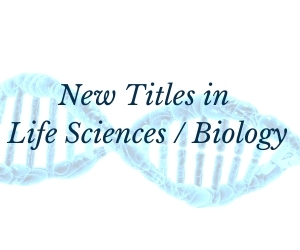System Upgrade on Tue, May 28th, 2024 at 2am (EDT)
Existing users will be able to log into the site and access content. However, E-commerce and registration of new users may not be available for up to 12 hours.For online purchase, please visit us again. Contact us at customercare@wspc.com for any enquiries.
This book is intended for non-specialists and students, presenting a unique introduction to the field of DNA nanotechnology. The primary focus is on the extraordinary advantages of specificity and sensitivity obtained by integrating DNA nanostructures in bioanalytical devices.
DNA Nanotechnology for Bioanalysis provides a concise and rigorous description for the fabrication of various types of functional nanostructures by optimized software-aided high-yield synthesis. Following this is the explanation of methods to decorate these nanostructures with molecules such as proteins, metal nanoparticles or bioorganic moieties covalently bonded onto DNA via self-assemblage processes. Also provided is a concise review on non-canonical DNA structures (such as G-quadruplexes) and their targeting by small molecules for applications in pharmacology. Finally, it describes the exciting applications of DNA nanostructures in life sciences and nanomedicine, including ultraspecific molecular delivery, control of cell behavior, analysis of cell lysate and DNA-based nano-tools for super-resolution sub-cellular imaging.
Sample Chapter(s)
Foreword (46 KB)
Chapter 1: Nanotechnology and the Unique Role of DNA (1,616 KB)
Contents:
- Nanotechnology and the Unique Role of DNA (Elisa-C Schöneweiβ, Andreas Jaekel and Barbara Saccà)
- DNA as Building Material at the Nanoscale: From Concepts to Software-aided Design (Wolfgang Pfeifer, Georg Homa, Giuseppe Arrabito and Barbara Saccà)
- DNA Sensors for the Detection of Biomolecules and Biochemical Conditions (Birgitta R Knudsen, Anni H Andersen, Magnus Stougaard, Giuseppe Arrabito, Raffaella Suriano and Yi-Ping Ho)
- DNA Nanostructures in Cell Biology and Medicine (Liqian Wang and Giuseppe Arrabito)
- Targeting G-quadruplex DNA as Potential Anti-cancer Therapy (Riccardo Bonsignore, Elisa Trippodo and Giampaolo Barone)
- DNA-aided Super-resolution Bioimaging (JiaJun Li, Giuseppe Arrabito and ZhaoShuai Gao)
Readership: Non-specialists, undergraduate students and researchers who are interested in learning the basics of DNA nanotechnology.


















